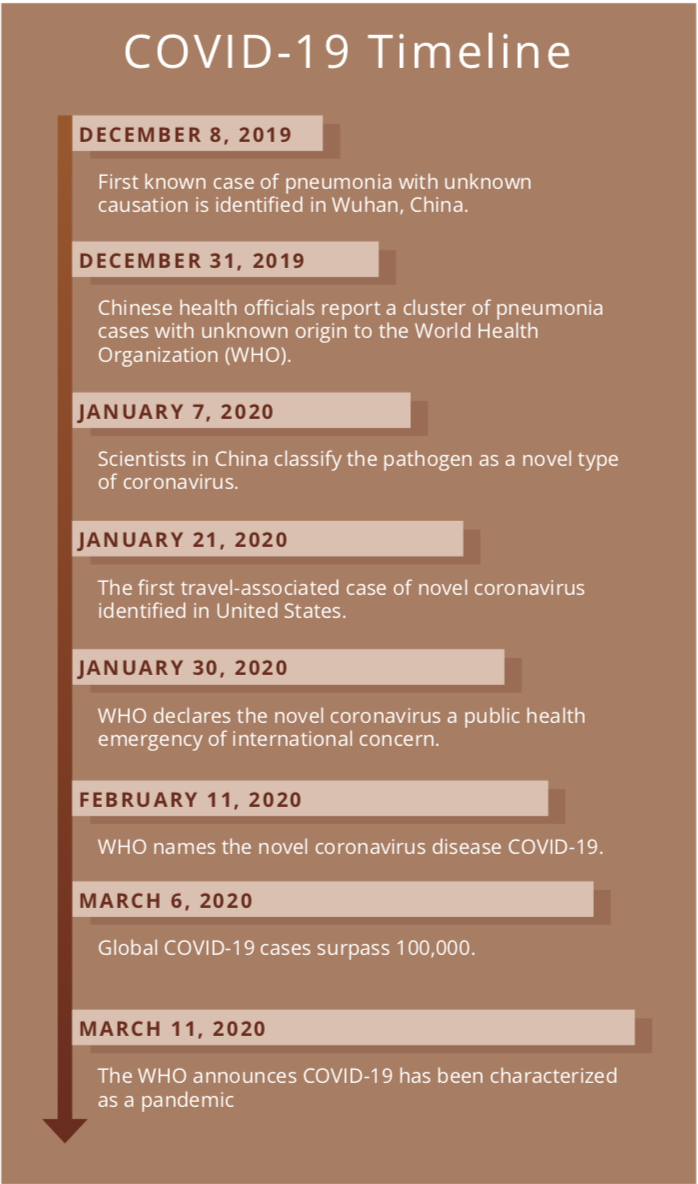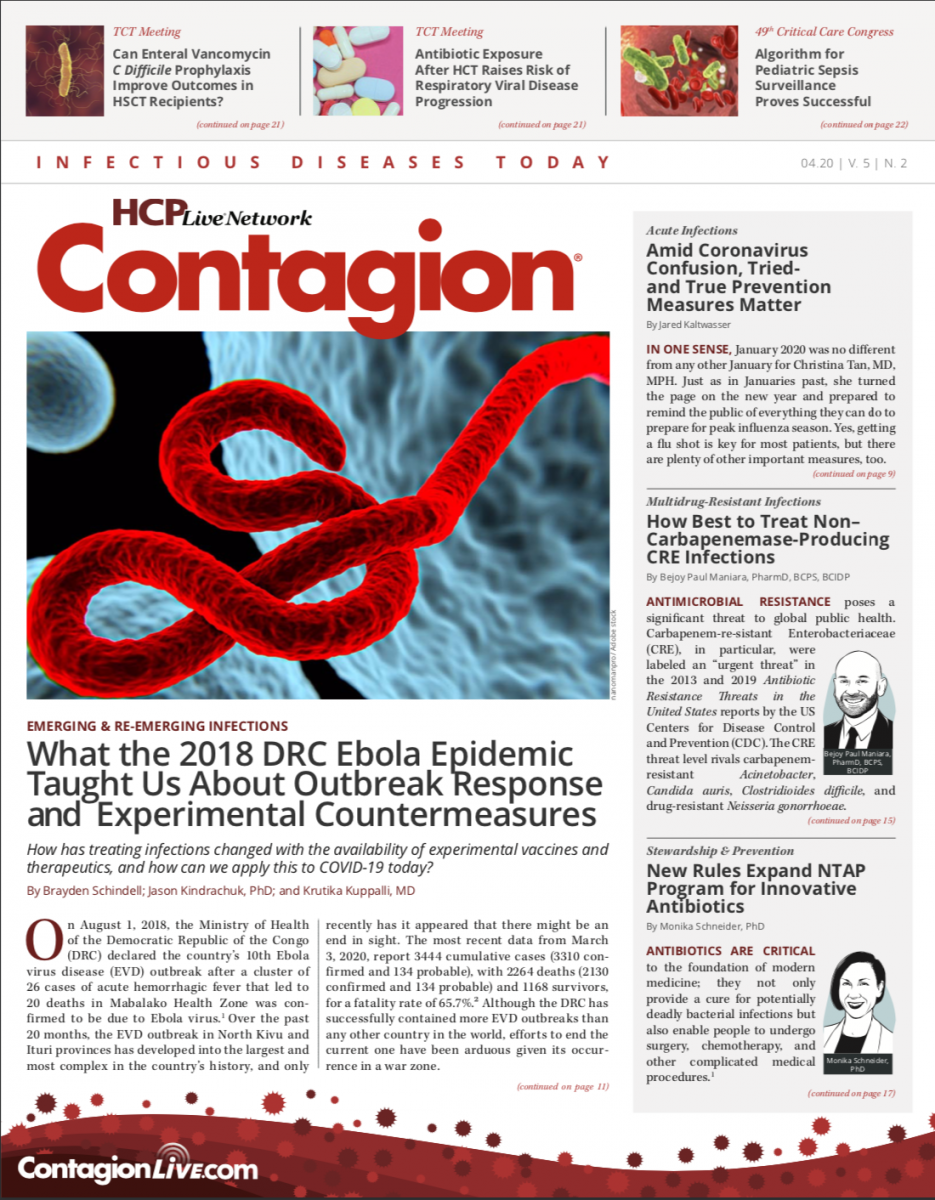State Epidemiologist: Amid Coronavirus Confusion, Tried-and-True Prevention Measures Matter
Christina Tan, MD, MPH, from the New Jersey Department of Health discusses COVID-19.
In one sense, January 2020 was no different from any other January for Christina Tan, MD, MPH. Just as in Januaries past, she turned the page on the new year and prepared to remind the public of everything they can do to prepare for peak influenza season. Yes, getting a flu shot is key for most patients, but there are plenty of other important measures, too.
“Take those easy steps,” Tan, the state epidemiologist for the New Jersey Department of Health, told Contagion®. “Cover your coughs and sneezes. Make sure you wash your hands all the time. Stay home when you’re sick.”
However, this past January also proved very different from previous ones for Tan and other public health officials. This year, the routine precautions are urgent for a new and startling reason: the novel coronavirus and the fast-spreading illness it causes, coronavirus disease 2019 (COVID-19).
“Late last year, we started to see a cluster of unusual pneumonias come up in China,” she said. “That’s when we first started to get an indication that there might be some sort of new, novel emerging infection that was going on.”
In the weeks that followed, more information came out, and the epidemiological story evolved along with it. By late February, more than 2500 people in China had died from COVID-19, and some 20 cases had been detected by health care providers in the United States. As February closed, the US Centers for Disease Control and Prevention (CDC) announced the first death of a patient who had tested positive for the illness in the United States, a serious milestone for a disease that initially was centralized in a single province in China.
THE QUESTION OF CONTAGIOUSNESS
When a new virus emerges, one of the most pressing questions facing Tan and other public health officials is: Just how contagious is it?
That’s a difficult question to answer in the context of the coro- navirus, in part because it’s not clear how many individuals actually have COVID-19. Many will have relatively mild symptoms, so it’s possible that many more individuals have contracted the illness than have been tested and officially reported.
“The information is still evolving about the transmission of the virus that causes COVID-19 illness,” Tan said. For instance, she added, of the first 15 cases reported in the United States, just 2 were associated with person-to-person spread in the United States; the rest were the result of travel to China.
The main symptoms of the illness include fever, shortness of breath, and cough. However, Tan said, it’s generally the degree of severity that distinguishes COVID-19. “This is a little bit different, a little bit more severe than what we’ve been seeing with your routine respiratory virus illnesses,” she said.
US PUBLIC HEALTH SURVEILLANCE
The disease’s emergence in the United States has put public health officials on high alert. Top priorities include getting a handle on the size and scope of the problem here. Physicians are on the front lines, and Tan said that to meet the challenge, clinicians must keep up with the latest news and public health advisories.
“In the United States, the CDC has issued guidance with regard to what clinicians can be looking for,” she said. “We always strongly encourage clinicians to go on the CDC website, because things are changing so rapidly, just to keep themselves abreast of the most up-to-date information, such as what the current criteria are that we’re looking for.”
Those criteria can change in definition and importance as time goes on. A data point that seems irrelevant at the beginning of the crisis might later prove extremely important. A patient who one day does not meet the requirements for COVID-19 testing might the following day if the criteria change. That can be a difficult needle for public health officials like Tan to thread.
“We always try to get the balance of ensuring that we get the message out there to clinicians that sometimes things will change,” she said. “Sometimes when you’re looking for illnesses, you might need to modify what you’re looking for based on the newest information.”
WARNING SIGNS AND SYMPTOMS
At present, clinicians are asked to look for symptoms of a respiratory infection plus particular risk factors. “For now, the criteria [involve] looking at individuals with a history of exposure to the hot zone, Hubei province in China, or contact with individuals who are confirmed cases of COVID and with clinical presentation of fever and respiratory tract illness,” she said.
Tan cautioned that those guidelines will likely be supplemented or amended in the coming days. “Right now, we’re asking health care providers to be really vigilant in looking for illnesses that might be compatible with COVID-19 illness,” she said. “We also encourage child care providers to take good travel histories.”
Physicians should be proactive, particularly when it comes to contacting local public health authorities, Tan said. “[If] you are concerned that you might have a patient with a reportable condition or with infection with an emerging infectious disease like COVID-19...contact your public health departments to then report that information and then take next steps,” she said.
Health care facilities should also review their infection control plans, something they ought to do periodically even when there’s not a specific threat. Tan also said clinicians have a role to play in halting misinformation, including the perpetuation of unscientific stereotypes.
“Unfortunately, we’re hearing about cases of stigmatization and prejudice against certain populations, particularly related to travelers coming back from China,” she said. “We want to remind everybody that what we’re fighting right now is a virus. We’re not fighting against pockets of our population who might have had a risk factor that put them at risk for COVID-19 illness.”
TREATMENT LIMITS
If cases of COVID-19 are confirmed, there is no approved treatment explicitly for the illness. Instead, patients with the illness receive supportive care and symptom relief.
Patients who have underlying medical conditions and/or might be immuno- compromised are at a higher risk of complications.
Meanwhile, as the virus continues its spread, much uncertainty remains. However, Tan said, the same disease prevention precautions that have long applied will continue to be important, whether the novel coronavirus ends up a pandemic or fades away quickly.
“We have to remind ourselves that every single year we see seasonal flu, we see respi- ratory illnesses emerge,” she said. “Keeping those infection control plans in mind and exercising those infection control protocols are really key to not only dealing with the routine but also [are] a step toward the prevention of emerging issues.”
The coronavirus might dominate the headlines, but flu season continues at full pace, and physicians shouldn’t put away all those flu prevention posters, Tan said. “Again, because we’re in the middle of flu season, we want to remind everybody: Get your flu shot,” she said. “That is one tool that we do have to protect against what is a common threat to us all right now.”


2 Commerce Drive
Cranbury, NJ 08512
All rights reserved.
